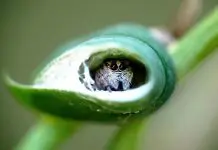Hedgehogs are one of the smallest mammals found in the world. Despite being commonly mixed up with a porcupine, they are not at all related to each other in anyways, other than having a slight similarity when it comes to their defense mechanism. For those who are interested to learn more about hedgehogs and their living habitats in the wild, this article would be quite relevant to you.
They can be found in the wild regions of Africa, Central Asia, Europe and the Middle East. There are over 17 species of hedgehogs documented and among these species, depending on the location or region that they are being found, their physical appearance and characteristics would adapt geographically according to the different territories they are being found.
Hedgehogs are exceptionally versatile no matter where they are. With a survival characteristic where they would find a depression.
Wild habitat in Africa
African hedgehogs are mainly found in the more warmer and drier climates. Because of the habitat that the eastern and central location of Africa possesses, it is most favorable to these hedgehogs as the region is being defined by grassland, woodland, and rocky components where they are able to hide from their predators. Another vital reason may be due to the fact that these living conditions are suitable for their primary source of food, which are insects. In the wild, hedgehogs tend to steer clear from swampy areas as muddy terrains are not their thing and neither would we call a muddy area home.
Wild habitat in Asia
Discovered only in the central regions of Asia and certain parts of the Middle East such as China, Russia, Ukraine, and Turkey, the most common hedgehog species that can be spotted would be the long-eared hedgehog. These small little creatures move around periodically in the wild as they might feel threatened by human civilization or if the weather is unfavorable to them. In Asia countries, Asian hedgehogs tend to keep themselves away from the deserts and rocky areas and would prefer grassy locations that are close by to forests or rivers so they are able to make their escape in the event of predators.
Wild habitat in Europe
Likewise, in European countries such as UK, Italy, France, Spain, Portugal and several other Nordic regions, the hedgehogs here are more susceptible to being near to the urban areas that are filled with humans instead of the wilderness that are far away from civilization. Reason being that these countries are often affected by frosty living conditions, which are not ideal for these hedgehogs. Colder temperatures would only induce them to go into hibernation, which is primarily to last through the winter as part of their survival instinct.
Who are their predators?
Like all other animals who are under the food chain ecosystem, the hedgehog is no exception too. Here are some of the hedgehog’s predators that are commonly known to prey on these little creatures.
But lucky for these hedgehogs, they would protect themselves with their body full of sharp quills by curling up into a ball, their most delicate belly, limbs and head would be tucked, protecting them from any dangers.
However, there are still some predators that are able to penetrate through their main line of defense, which is a back full of spiky quills.
Most of the time, besides acting as a strong and sturdy ball of armor, its quills are also able to help the hedgehog to camouflage especially in forests and suburban areas, they would seem like a cluster of twigs where they would go undetected until the predator decides to leave the scene.
#1 cause of death
The #1 cause of death that is quite commonly reported in most hedgehogs would be internal and external parasites, ringworm, cancer, gastrointestinal diseases followed by pneumonia.
Depending on the living conditions, climate changes and the hygiene of the environment, your hedgehogs may be prone to these following diseases. Hence it is always good to know what type of diseases and the symptoms that entails with it to intervene immediately before it’s too late.
These diseases are usually the cause of poor hygiene and if the hedgehogs are not properly fed it would further increase its chance of incurring such diseases, else it would be that their food is contaminated else they were to come into direct contact with infected hedgehogs.
Even though they have a back full of sharp quills, it is still susceptible to death.
Over the years, thousands and thousands of unlucky hedgehogs fell victim to road accidents, their body would not withstand the weight and the impact of any fast speeding car that is on their way, making cars another notable threat to these little ones.
How do they survive?
In order to survive in the wild, hedgehogs are always on the move. Migrating from places to places and it is extremely beneficial to them as they are nocturnal animals and they are only wide awake at night.
This reduces the dangers significantly as most of its predators are active only in the day, hedgehogs would have an edge if they were to move around.
Another smart way that they employ is to enter the suburban areas where humans are densely populated, places such as backyards or gardens of your homes.
As most of their natural predators are not comfortable around humans, they would rather keep away from the suburban areas and stay in the forest, further reducing the chances of them being targeted.
Hedgehogs are generally solitary animals, traveling from one spot to the other, in search of shelter and food sources from time to time. Hedgehogs are insectivorous creatures whereby their primary food sources can include a variety of insects such as mealworms, earthworms, bugs, ants, fruits, and nuts.
But in the modern world, they can also be found in suburban areas right smack in the depths of garbage dumps and rubbish chutes. The perfect shelter that any hedgehog would require is one that is covered with an abundance of leaf scraps and twigs, ideally a depression or a hole that is situated between two rocks so as to prevent any bigger predator’s intrusion.
How to help wild hedgehogs in your garden?
Is it good or bad to have wild hedgehogs roaming around in your garden?
Have you ever chance upon these cute little creatures scuffling around your garden, through those rustling leaves?
Have you ever wondered why are wild hedgehogs attracted to your garden?
The reason is simple, as climate changes, wild hedgehogs will always migrate from place to place, in search of a comfy place to either seek shelter or to hibernate. This usually happens in the colder countries, likewise, if your garden is well-kept and maintained, it would seem very much inviting to hedgehogs and other wildlife too.
Is it beneficial for you to house or allow these wild hedgehogs to come in and out of your garden? Yes, there are several benefits when it comes to housing these little guys. First, of, they make good gardeners themselves, and they are able to help eradicate pests such as snails, slugs, and other pesky insects that would destroy or cause harm to your plants.
Homeowners would usually leave their leftovers at a corner for wild hedgehogs to rummage through. But make no mistake, do not leave milk or bread for them as they are lactose intolerant, this would trigger them to have diarrhea or a bad tummy ache like us humans.
Instead, leave them food such as a dog or cat kibble or any canned or dried food that can be bought from pet stores. At the same time, be kind enough to provide them with a bowl of fresh water to quench their thirst and hydrate themselves.
In order to attract or make it seem “inviting” to have them back often, always have a specific space dedicated for food and water to condition them into thinking that every time if they were to visit that area, there will always be food or water.
Have parts of your garden unkempt to preserve that “wild” factor, this would encourage them to come back, seeing that they are able to build their nests for hibernation and a place to hide and sleep.
If you are aware that there are hedgehogs roaming in your garden, ensure to cover any drainages or holes, or remove slug pellets if you have any lying around as they might think of it as food and instead of killing slugs, these hedgehogs will be poisoned.
Also, before mowing your garden, be sharp when trimming grasses as there might just be smaller hedgehogs that you might have missed out.
Long grasses are a thing for hedgehogs as it gives them an edge when it comes to hiding or escaping from predators which makes them undetected, at the same time, it is also a good place for them to hunt smaller insects, beetles, and earthworms.
I hope this guide allows you to better understand and know how do hedgehogs live in the wild, what diseases are they prone to and with better knowledge when it comes to these little guys, you will know what to do or take note of when they fall sick, thus reducing the deaths of these hedgehogs.
Taking care of wild hedgehogs are really not that much of a hassle as it does not require much effort and the resources needed are not that expensive at all. If there are any information that you feel should be included, any details I might have missed out, do let me know under the comments section and I will elaborate and further fine-tune this copy to educate all hedgehog lovers out there!



![Sick Axolotl, Fungus, Stress Symptoms [Axolotl Illness Guide 2025] Axolotl fungus](https://exopetguides.com/wp-content/uploads/2018/06/axolotl-218x150.jpg.webp)
















